Theodore Roosevelt’s Children
Written by Ed Lengel

Quentin Roosevelt
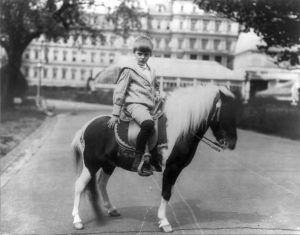 Teddy Roosevelt’s youngest son, Quentin, was born on November 19, 1897, in Washington, D.C. Just three years old when his father became President of the United States in 1901, the outgoing, mischievous boy turned the White House into his personal playpen. Quentin’s adventures there included taking his pony Algonquin up the mansion’s elevator to entertain his sick brother Archie in his bedroom. Archie’s sudden shout of excitement startled the pony, who went crashing to the floor, and brought the whole family–including the president–running upstairs.
Teddy Roosevelt’s youngest son, Quentin, was born on November 19, 1897, in Washington, D.C. Just three years old when his father became President of the United States in 1901, the outgoing, mischievous boy turned the White House into his personal playpen. Quentin’s adventures there included taking his pony Algonquin up the mansion’s elevator to entertain his sick brother Archie in his bedroom. Archie’s sudden shout of excitement startled the pony, who went crashing to the floor, and brought the whole family–including the president–running upstairs.
 As he grew, and attended Harvard University, Quentin became short-sighted and developed back problems. Even with these handicaps, he joined the armed forces—like his brothers–when the United States entered World War I in 1917; Quentin chose to become a pilot, in spite of his eyesight, and secured a lieutenant’s commission by cheating on his eye exam. Famous American ace Eddie Rickenbacker was taken with the young man’s personality: “Gay, hearty and absolutely square in everything he said or did, Quentin Roosevelt was one of the most popular fellows in the group. . . . His bravery was so notorious that we all knew he would either achieve some great spectacular success or be killed in the attempt.”
As he grew, and attended Harvard University, Quentin became short-sighted and developed back problems. Even with these handicaps, he joined the armed forces—like his brothers–when the United States entered World War I in 1917; Quentin chose to become a pilot, in spite of his eyesight, and secured a lieutenant’s commission by cheating on his eye exam. Famous American ace Eddie Rickenbacker was taken with the young man’s personality: “Gay, hearty and absolutely square in everything he said or did, Quentin Roosevelt was one of the most popular fellows in the group. . . . His bravery was so notorious that we all knew he would either achieve some great spectacular success or be killed in the attempt.”
Sadly, Quentin was shot down behind enemy lines on July 14, 1918. German troops buried him with full military honors; after the war, his grave became a place of pilgrimage for American visitors to France. Heartbroken, Teddy Roosevelt survived his son by just six months.
Archie Roosevelt
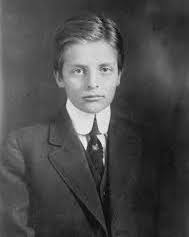
Archibald “Archie” Roosevelt was born on April 10, 1894, in Washington, D.C., where his 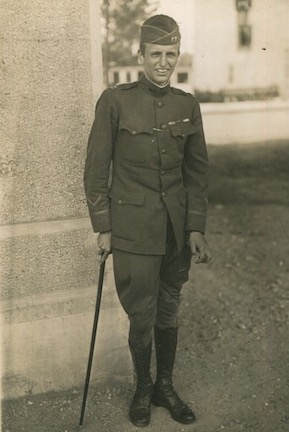 father, Teddy, then served as vice president. He moved into the White House in 1901 with the rest of his siblings, but while the other Roosevelt children were loud and rambunctious, Archie was relatively studious and reserved. Like his father and his brother Kermit, Archie loved reading, which contributed greatly to his happiness and success in life.
father, Teddy, then served as vice president. He moved into the White House in 1901 with the rest of his siblings, but while the other Roosevelt children were loud and rambunctious, Archie was relatively studious and reserved. Like his father and his brother Kermit, Archie loved reading, which contributed greatly to his happiness and success in life.
Graduating from Harvard University in 1917, Archie joined his brothers in the armed forces when the United States entered World War I. Badly wounded while serving as a captain with the 1st Infantry Division, he returned to the home and embarked upon a career as a successful business executive. Archie also helped to raise four children—including his first son Archibald, Jr., who would become an intelligence officer with the C.I.A.
Archie’s military career was not yet over. In World War II, he was commissioned a lieutenant colonel in the 41st Infantry Division. He served with distinction in New Guinea, earning a Silver Star to add to the decorations he had garnered in World War I. But, he was severely injured by a Japanese grenade—which hit the same knee he had wounded in World War I. This made Archie the only American soldier to be placed under full disability for injuries received in the two world wars. From the end of the war until his death in 1979, Archie returned to business, and became a prominent conservative political activist.
Kermit Roosevelt
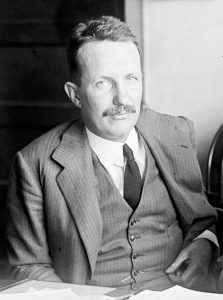
Born on October 10, 1889, in Oyster Bay, N.Y., Kermit Roosevelt had the most adventurous–but also the most tragic life–of all Teddy Roosevelt’s children. Studious and plagued by ill health as an adolescent, Kermit took seriously his father’s admonitions to test life’s boundaries to the fullest. Even before completing his studies at Harvard University, from which he graduated in 1912, Kermit spent a year traveling across Africa and Europe. Two years later, he postponed his marriage to accompany his father—by then a former president—on a dangerous journey to the River of Doubt in Brazil, during which he and his father nearly died.
While his brothers joined the American armed forces in World War I, Kermit decided to 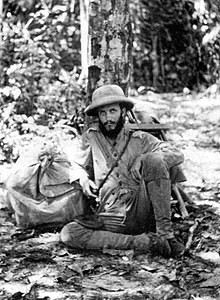 enter the British army, where he was commissioned a major. The setting for his service was exciting and exotic Mesopotamia, where he drove Rolls-Royce armored cars in the scorching desert (an experience about which he would write in his memoir, War in the Garden of Eden). Later, he entered service with the American army as an artillery officer.
enter the British army, where he was commissioned a major. The setting for his service was exciting and exotic Mesopotamia, where he drove Rolls-Royce armored cars in the scorching desert (an experience about which he would write in his memoir, War in the Garden of Eden). Later, he entered service with the American army as an artillery officer.
Still restless, Kermit ventured on two daring expeditions to Asia with his brother Ted in 1925 and 1928-29, documented in their books East of the Sun and West of the Moon, and Trailing the Giant Panda. When World War II began, but while the United States remained neutral, Kermit again joined the British army with the help of his friend, British Prime Minister Winston Churchill, and served honorably during the 1940 fighting in Norway. Unfortunately, poor health brought on by the malaria he had contracted in Brazil, along with heavy drinking, forced Kermit to leave the British Army in 1941. Subsequently posted to Alaska as an officer in the American Army, Kermit Roosevelt ended his life there in 1943.
Theodore Roosevelt, Jr.
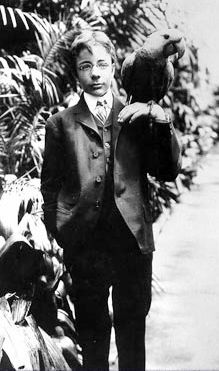 While all of Teddy Roosevelt’s four sons had distinguished military careers, his son Theodore “Ted” Roosevelt, Jr., born in Oyster Bay, New York, on September 13, 1887, was the only one to be portrayed in a major motion picture. Of the four boys, Ted was the closest to his extremely demanding father. Among the things he learned was a passion for reading, and for history. After graduating from Harvard University in 1909, Ted launched a prosperous business career, but continued, like his father, to read voraciously.
While all of Teddy Roosevelt’s four sons had distinguished military careers, his son Theodore “Ted” Roosevelt, Jr., born in Oyster Bay, New York, on September 13, 1887, was the only one to be portrayed in a major motion picture. Of the four boys, Ted was the closest to his extremely demanding father. Among the things he learned was a passion for reading, and for history. After graduating from Harvard University in 1909, Ted launched a prosperous business career, but continued, like his father, to read voraciously.
During World War I, Ted Roosevelt was commissioned a lieutenant colonel and eventually took 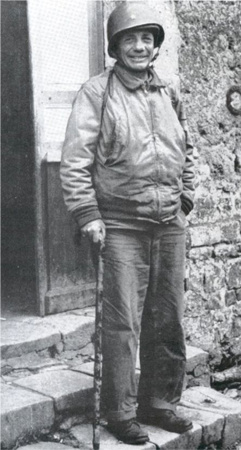 command of the 1st Infantry Division’s 26th Regiment, in which his brother Archie also served. Determined to lead from the front, Ted served with distinction and was, like his brother, severely wounded in action. Before returning to business in the United States, he helped to found the American Legion. Ted was the only one of the Roosevelt boys to follow their father in a political career, which led to his appointment as Assistant Secretary of the Navy, Governor of Puerto Rico, and Governor General of the Philippines; he also found time to join Kermit in two adventurous expeditions to Asia.
command of the 1st Infantry Division’s 26th Regiment, in which his brother Archie also served. Determined to lead from the front, Ted served with distinction and was, like his brother, severely wounded in action. Before returning to business in the United States, he helped to found the American Legion. Ted was the only one of the Roosevelt boys to follow their father in a political career, which led to his appointment as Assistant Secretary of the Navy, Governor of Puerto Rico, and Governor General of the Philippines; he also found time to join Kermit in two adventurous expeditions to Asia.
By the time the Japanese attacked Pearl Harbor on December 7, 1941, Ted Roosevelt was in ill health with a severe arthritis and a weak heart. He nevertheless insisted on returning to military service, and was appointed a brigadier general with the 4th Infantry Division. On D-Day, June 6, 1944, he came ashore on Utah Beach alongside his men, famously carrying the copy of Pilgrim’s Progress that rarely left his side. Ted’s heart was too weak to hold out for long; he died on July 12, and was laid to rest next to Quentin, who had been killed in action, and buried in France in 1918. Actor Henry Fonda would later portray Ted Roosevelt in the movie The Longest Day.
Ethel Roosevelt
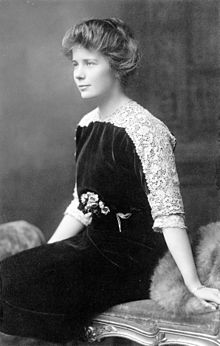
Ethel Roosevelt, born in Oyster Bay, New York on August 13, 1891, was the youngest daughter of Teddy Roosevelt and the only one from his second wife, Edith. Not yet ten years old when her father became president in 1901, Ethel enthusiastically joined her four brothers in their famously rowdy White House antics. On the whole, though, she was known for having a quiet and compassionate personality.
Ethel married surgeon Richard Derby in April 1913, had four children, and refused to settle into a retiring domestic life. At the outbreak of World War I in 1914 she immediately joined her husband in medical service in France—well before any of her brothers entered the war. Afterwards, she campaigned actively for natural conservation and civil rights; became a trustee of New York’s American Museum of Natural History; and successfully worked to turn her family’s home at Sagamore Hill into a National Historic Site. Like her siblings, she also traveled to remote locations around the world. She died in 1977.
Alice Roosevelt
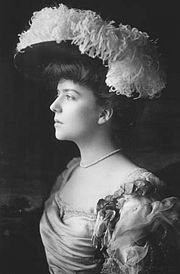
Teddy Roosevelt’s oldest child Alice, born in New York City on February 12, 1884, entered the world amidst tragedy, but left an unforgettable mark before her passing in 1980. Her mother, Alice Hathaway Lee Roosevelt, died from Bright’s disease two days after her daughter’s birth, leaving Teddy, who lost his mother at about the same time, crushed and distraught. Unable to speak his first wife’s name, he called his daughter “Baby Lee” from then on. Indeed, to the very end of her life, she permitted very few people to call her by her actual first name, preferring to go by a variety of nicknames.
Strikingly beautiful, Alice Roosevelt quickly became a leading figure in Washington, D.C., society when she entered the White House with her father, stepmother, Edith, and her five half-siblings in 1901. But Alice was not happy. She and Edith never got along, and in time she also grew distant from her father, whom she believed favored his other children.
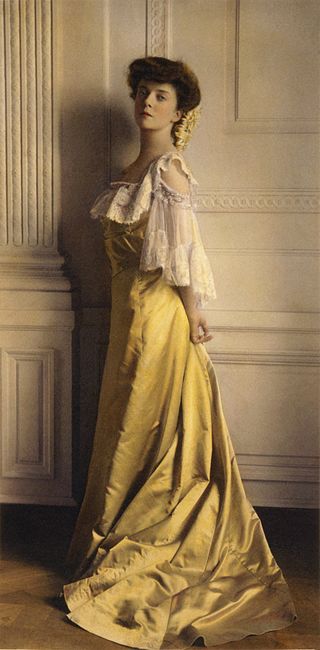 Despite this, Alice exuded an aura of self-confidence that matched her independent, outspoken character. Shattering the conventions of the time, she dressed flamboyantly, smoked, enjoyed late night parties, and openly expressed her opinions on political matters—including to her father. On one occasion, he supposedly grumbled, “I can either run the country or I can attend to Alice, but I cannot possibly do both.”
Despite this, Alice exuded an aura of self-confidence that matched her independent, outspoken character. Shattering the conventions of the time, she dressed flamboyantly, smoked, enjoyed late night parties, and openly expressed her opinions on political matters—including to her father. On one occasion, he supposedly grumbled, “I can either run the country or I can attend to Alice, but I cannot possibly do both.”
In 1905, Alice married Congressman Nicholas Longworth III, who would later become Speaker of the House of Representatives. She was not afraid to oppose her husband, publicly. And although she was a self-professed Republican, Alice—like her father—was ultimately a political nonconformist, supporting and opposing political causes and politicians depending on her own opinions rather than a party line.
When Alice Roosevelt was in her mid-eighties, an article in American Heritage described her as having: “electric blue eyes, a haughty nose, long ivory teeth which are often bared in a dazzling Roosevelt smile, and a fine complexion with amazingly few wrinkles above the nostril-line.” To the end, Alice Roosevelt remained her own woman.
Ed Lengel is the Chief Historian at the National Medal of Honor Museum; Arlington, Texas
This article is part of the Grateful American Foundation’s series, “Stories About the Presidential Children.” Young people have visited, explored and lived in the White House for much of its two-hundred-year history, but it wasn’t until Abraham Lincoln brought his family to Washington, D.C., in 1861, that presidential progeny attracted much public interest. Since then, young folks from infants and toddlers; teenagers and young adults; have left visible legacies in the White House and in the United States.
Though privileged, the lives of the presidential scions have never been easy. Often, public scrutiny has been no less difficult to endure than the high expectations of their demanding parents. Some children have nearly collapsed from the pressure. Through it all, however, some of the exceptional young men and women have risen with resolve, demonstrating courage in adversity and inspiring others to remarkable feats of leadership and public service. These are their stories.
